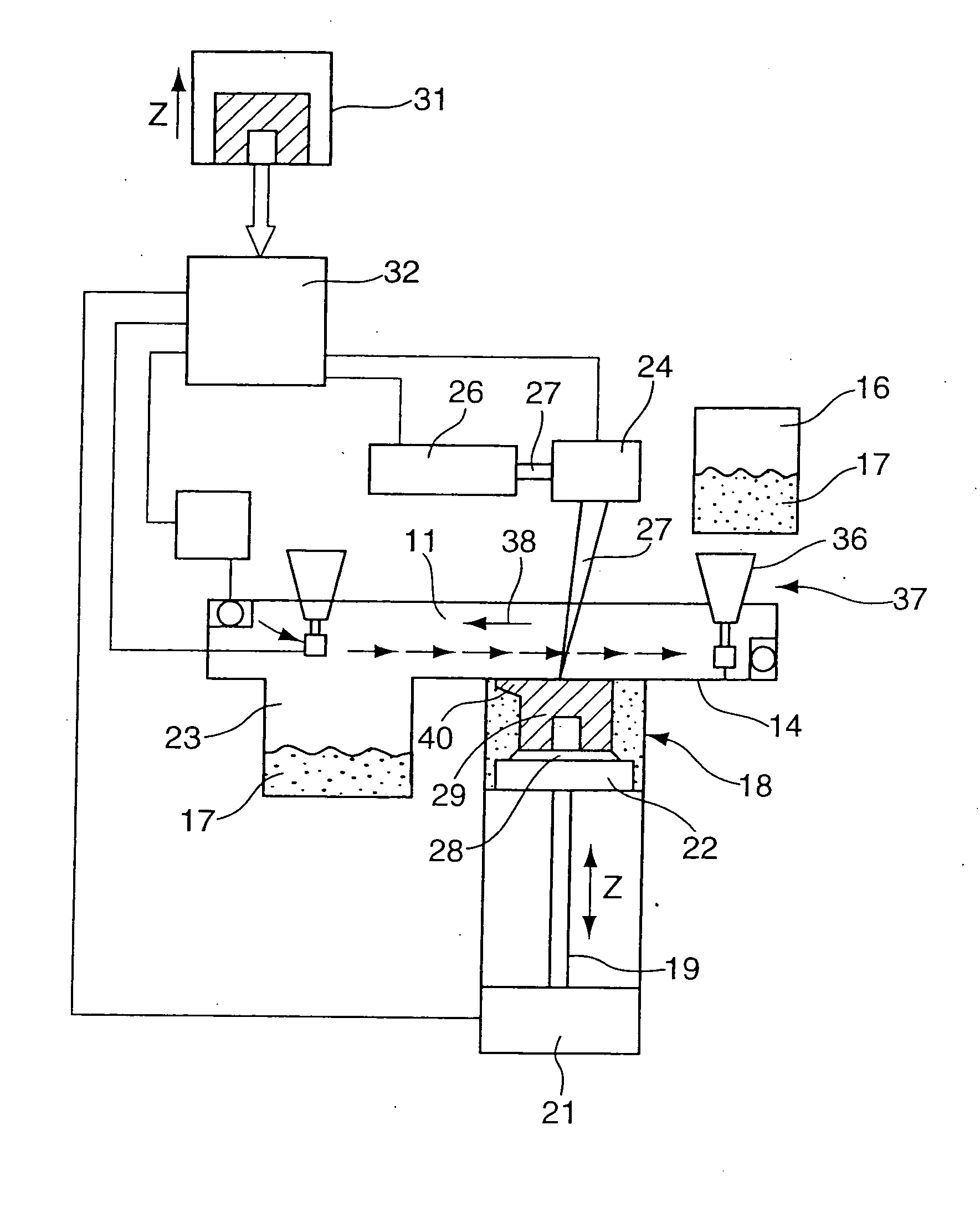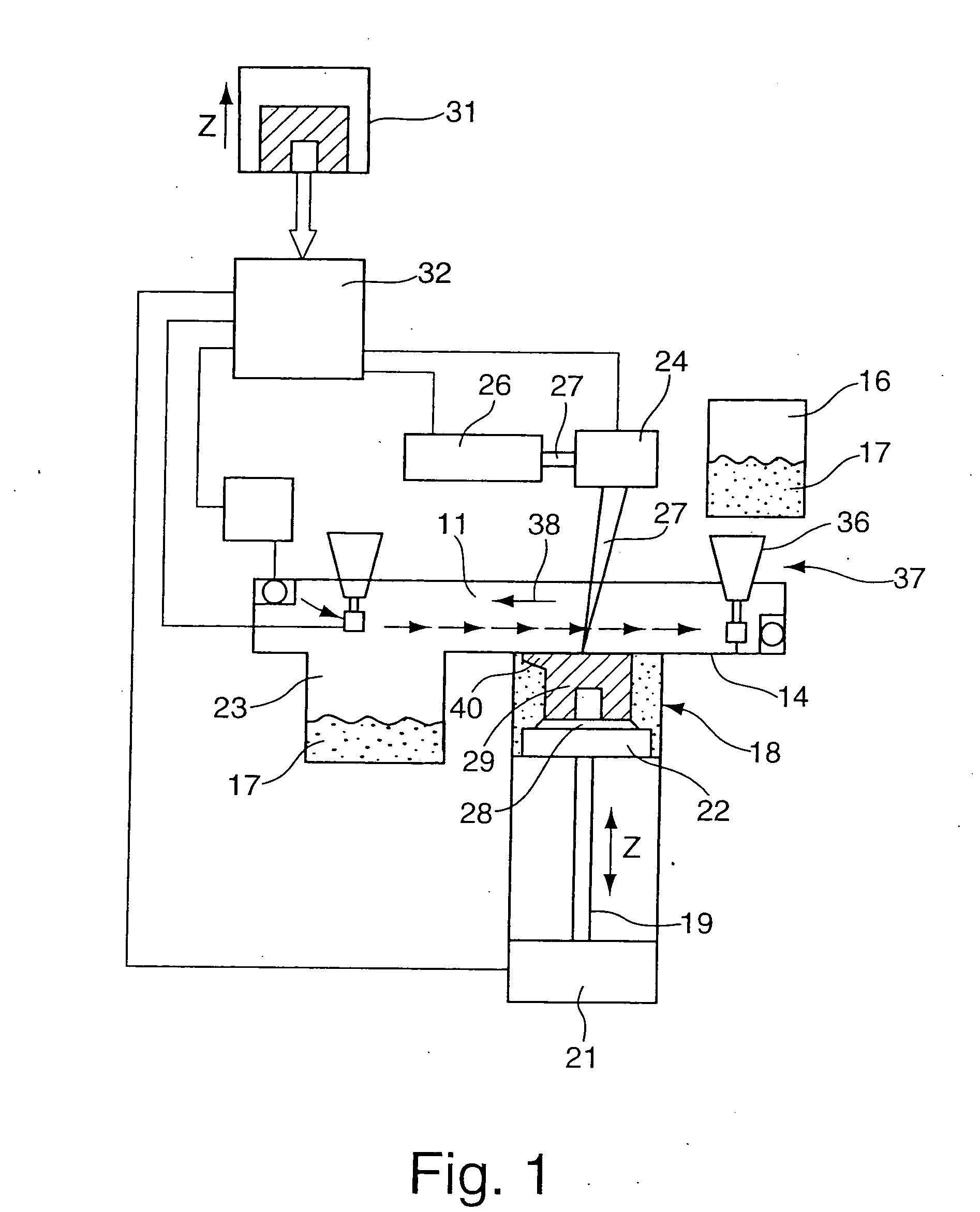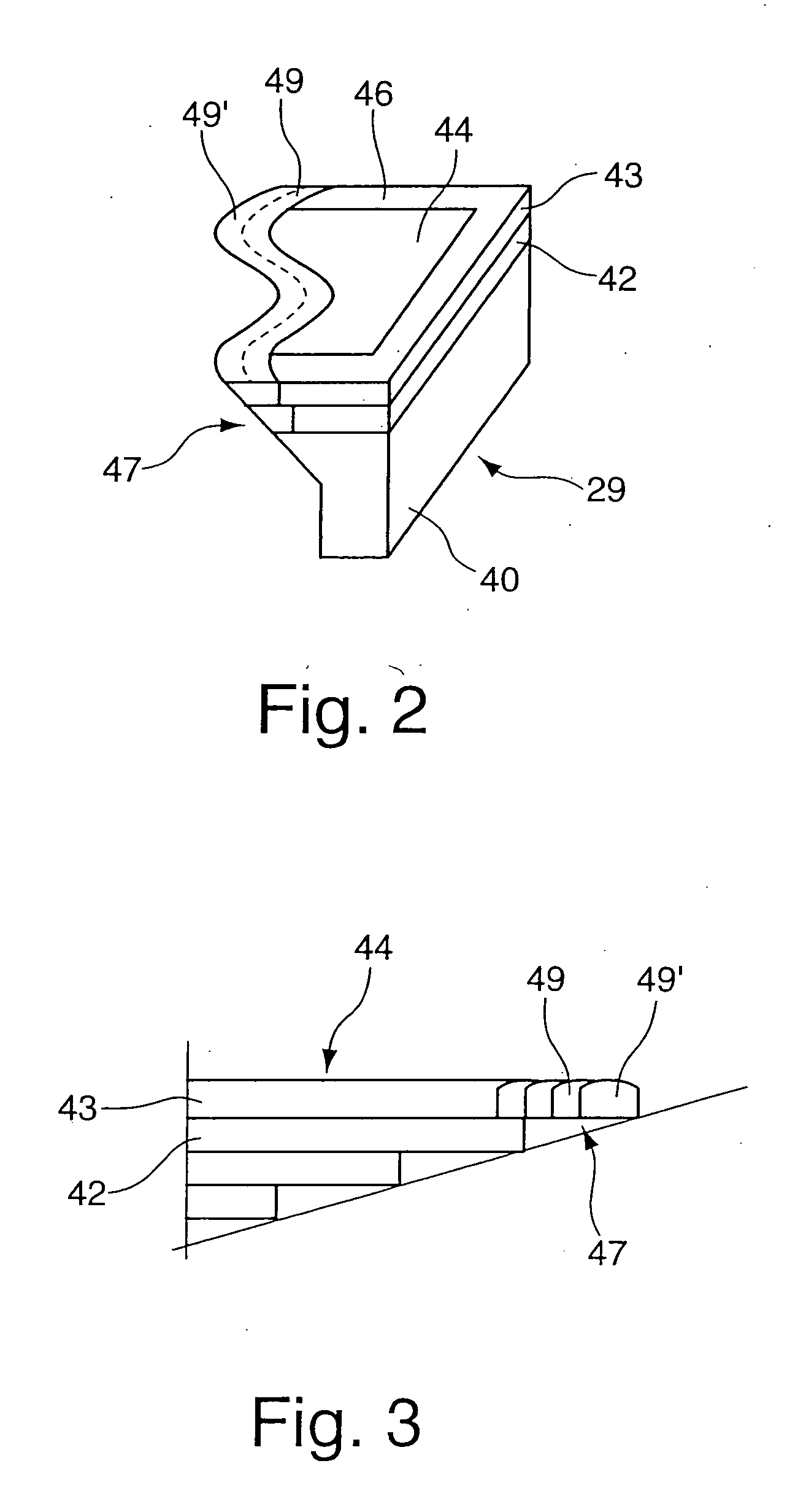Method for the manufacture of a three-dimensional molding
a three-dimensional molding and manufacturing method technology, applied in the direction of additive manufacturing, electric/magnetic/electromagnetic heating, additive manufacturing, etc., can solve the problems of stress build-up despite the adjustment of laser beams, and achieve the reduction of the risk of crack formation, high surface quality of molding, and improved surface composition and strength
- Summary
- Abstract
- Description
- Claims
- Application Information
AI Technical Summary
Benefits of technology
Problems solved by technology
Method used
Image
Examples
Embodiment Construction
[0020]FIG. 1 shows an apparatus for generative processing with laser radiation, particularly for selective laser melting, such as described in DE 198 53 978 C1. This apparatus comprises a process chamber 11. A storage tank 16 which is filled with material powder 17 is provided above a bottom area 14 of the process chamber 11. The material powders used may, for example, be ferrous metals, such as steel; non-ferrous metals, such as titanium or aluminum; or other materials, such as composite materials or plastic materials. A build chamber 18 which accommodates a build platform 22 driven by a drive 21 via a lifting screw 19 ends in the bottom area 14 from below. A base plate 28 is arranged on the build platform 22 in a detachable manner, wherein a molding 29 is built on the base plate 28. A collection tank 23 for the material powder 17 is provided next to the build chamber 18. A displacement assembly 24 directing a laser beam 27 generated by a laser 26 onto the build platform 22 or base...
PUM
| Property | Measurement | Unit |
|---|---|---|
| angle | aaaaa | aaaaa |
| width | aaaaa | aaaaa |
| diameter | aaaaa | aaaaa |
Abstract
Description
Claims
Application Information
 Login to View More
Login to View More - R&D
- Intellectual Property
- Life Sciences
- Materials
- Tech Scout
- Unparalleled Data Quality
- Higher Quality Content
- 60% Fewer Hallucinations
Browse by: Latest US Patents, China's latest patents, Technical Efficacy Thesaurus, Application Domain, Technology Topic, Popular Technical Reports.
© 2025 PatSnap. All rights reserved.Legal|Privacy policy|Modern Slavery Act Transparency Statement|Sitemap|About US| Contact US: help@patsnap.com



